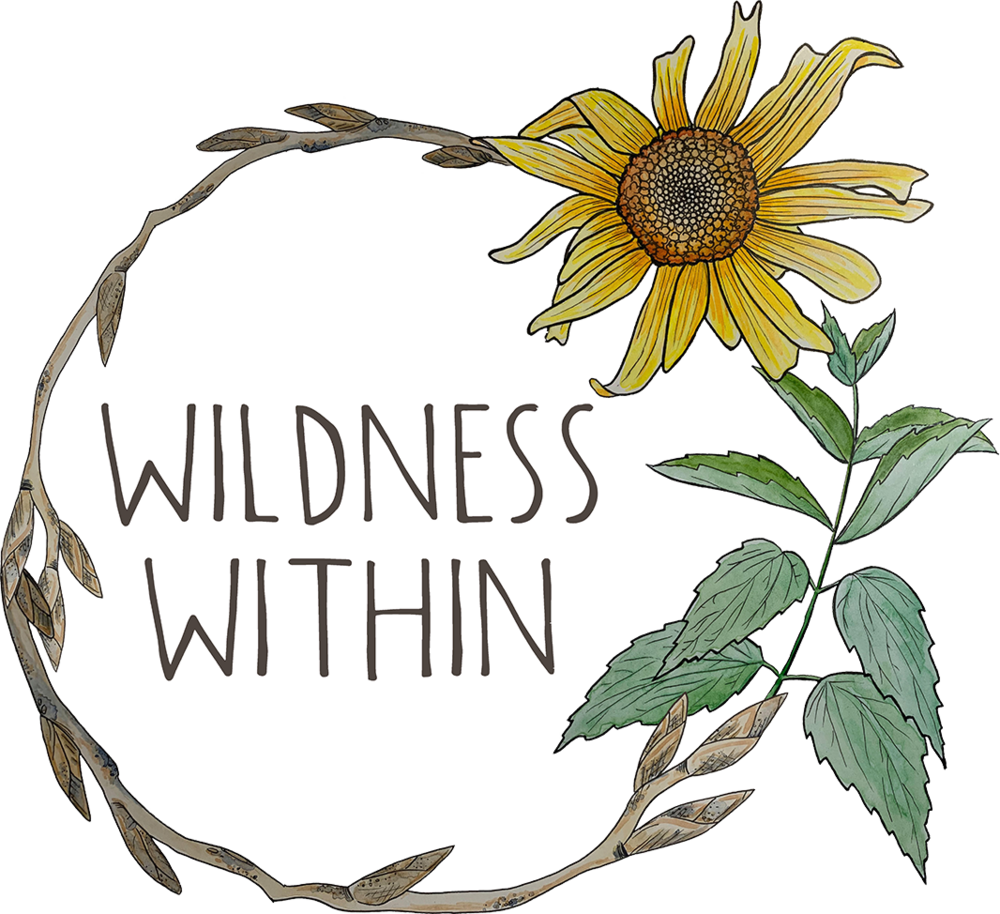Harvesting plants is a human instinct. It is what connects us with our ancient ancestors. It is what connects us humans with plants.
When done with intention, mindfulness and respect, we can curate relationships that transform our ways of being.
A Word on WEEDS
Cultivate your weeds or know your weeds! Local weeds are excellent medicinal herbs. They may be the gateway to wildcrafting or growing herbs. Local weeds such as dandelion, burdock, nettle, plantain, and valerian are traced back as medicinal and edible sources that European settlers relied on when arriving in North America.
When teaching about plants, I like to start with weeds. They tend to be the most abundant and easiest to work with. Native plants, blessed be their medicinal properties, are more at risk or already are endangered. Over harvesting is quite a concern of environmentalists, herbalists, and plant conscious folk. I highly encourage starting with the weeds and learn how to properly I.D. a plant in the “wild”.
Herbal Gardens
Medicinal and culinary herb gardens are a wonderful way to get acquainted with our green allies as well. There is a certainty in knowing the plant (if you planted it) and there’s nothing like walking out into your garden to harvest a plant. Growing herbs allows one to watch the life cycle of a plant from their kitchen window. You may gain a stronger relationship with that herb just by tending it.
And here’s where I have a little bit of bias-ness. I like to ethically harvest wild plants because they are “WILD”. Wild plants have to work for their way of life. No one is providing them with soil filled with nutrients. No one is watering them during a drought. Wild plants have a lot of nutrients and strong medicine within them. I prefer to work with wild plants, and I also respect them by harvesting “ethically”.
Harvesting the wild
Take what is given and needed. Do not pick a plant if you will not use that plant. I tell this one to three-year-olds and forty-five year-olds. Once a person learns about a plant or gets into the lovely state of harvesting it is hard to stop your groove. But LISTEN, STOP. Only harvest what the land says is appropriate and what you truly need (most of the time if you have this discussion with the plant or land, you’ll know the appropriate amount).
My Harvesting Protocol:
Get Permission– from the plants, from the land, from the people
1:10– for every 10 plants or parts, harvest 1 (this is dependent on type of plant and their growing abilities)
Be AWARE of your impact– leave the area better than you found it, it shouldn’t be noticeable where you harvested
Gather from HEALTHY plant communities
Harvest at the RIGHT TIME– seasonally the energy of the plant will change
Know where you are harvesting from– Pollution? Toxins? Animal feces? Heavy walking traffic? Endangered?
Be sure of the plant you are picking– properly key out plant, know the botanical qualities
Take what you need– it is too often we take more than we need or use
Give GRATITUDE – an offering in exchange
Words that resonate deeply with this process have been poetically described by Robin Wall Kimmerer in her popular book, “Braiding Sweetgrass".
Please learn more about The Honorable Harvest.
What to harvest & when
A General Guideline
BUDS & FLOWERS: Best harvest these when they are about to open. Much of the medicinal potency is lost when flowers are fully open. Also do you know how hard it is to tell whether a flower (such as a dandelion) has been pollinated? Once a flower is pollinated all of its energy is put into its ovaries (seeds) and the strength of medicine reduces.
LEAVES: Before the plant is in full bloom much of the medicinal strength lies within the leaves and stems. The leaves should clearly be fully developed. Be aware of the leaves you are harvesting, make sure there aren’t any insect bites, discoloration indicates an unhealthy leaf or a leaf going through senescence (death), does it taste strong? Also, if you are harvesting leaves when the weather is warm, make sure to harvest in the morning or towards the evening to prevent wilting. Mints are best picked with the flowers in bloom and during the hottest part of the year, when their essential oils are thoroughly developed.
ROOTS: Harvest during the spring or fall to capture the energy of the plant while it’s still deep within the root or bulb. Biennial plants are best harvested in the early spring of their second year. And perennials have a lot more energy in their roots when the aerial parts die back in the fall.
BARK: Generally bark is harvested when the sap is running. This is the time of cold nights and warm days– we see this back and forth in late winter and early spring. It is important to know proper ways of harvesting back– if done incorrectly you can girdle and kill the tree. Please learn this process before experimenting.
Learn more about seasonal harvesting, plants to be harvested during each season, and ways of eating and using the plants in the resource Seasonal Living.
